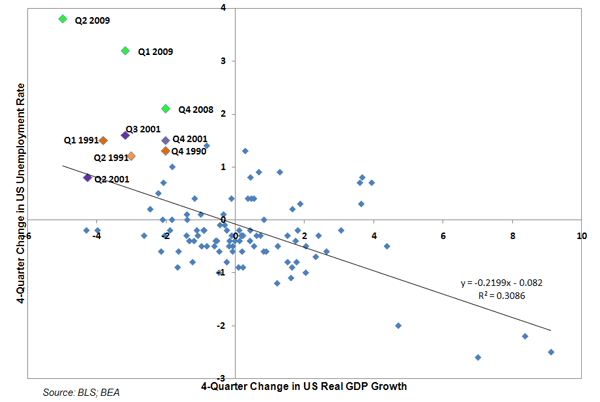Contents
The bond comes with a coupon rate that is identical to the market interest rate. For 18 holes of golf, the par is the total number of strokes an expert golfer is expected to require to complete the course. Most full-size golf courses range from pars of 69 to 74, with par-70, par-71 and par-72 courses most common. The coupon rate of a bond is the stated amount of interest that the bond will pay an investor at the time of its issue. A bond’s yield is its effective rate of return when the bond’s price changes.
On a par-5, she is expected to reach the green in three strokes, followed by two putts, for five strokes total. A bond’s nominal yield, depicted as a percentage, is calculated by dividing all the annual interest payments by the face value of the bond. In bonds, the a par meaning term to maturity is the length of time during which interest is paid. When it reaches maturity, its owner is repaid the principal. A bond is a fixed-income investment that represents a loan made by an investor to a borrower, ususally corporate or governmental.

If, when a company issues a new bond, it receives the face value of the security, the bond is said to have been issued at par. If the issuer receives less than the face value for the security, it is issued at a discount. If the issuer receives more than the face value for the security, it is issued at a premium.
Phrases Containing par
Treasury Bills are sold at a discount to par in multiples of $100. ThoughtCo is part of the Dotdash Meredith publishing family. The French preposition par means “through,” “by,” or “per” in English.

The coupon rate is the interest payments that are made to bondholders, annually or semi-annually, as compensation for loaning the issuer a given amount of money. For common stock, the company sets the par value before it is issued. The par value of a bond is the amount that will be paid upon maturity, https://1investing.in/ such as $1,000. Par value has nothing to do with a stock or bond’s market value, which varies as trading occurs. Shown above, with a coupon rate equal to the market interest rate, the resulting bond is priced at par. A par bond refers to a bond that currently trades at its face value.
Other definitions for par (4 of
Consider a bond with a 5-year maturity and a coupon rate of 5%. On a par-3 hole, an expert golfer is expected to need only one stroke to reach the green, followed by two putts, for three strokes total. Par value for common stock exists in an anachronistic form.
- Conversely, if interest rates fall then the price of a higher-coupon bond will rise and trade above its par value since its coupon rate is more attractive.
- The par value of a company’s stock can be found in the Shareholders’ Equity section of the balance sheet.
- ThoughtCo is part of the Dotdash Meredith publishing family.
- In golf, “par” is the number of strokes an expert golfer is expected to need to complete an individual hole, or to complete all the holes on a golf course.
- Par value for a share refers to the stock value stated in the corporate charter.
There aren’t official rules about how long a hole has to be to be called a par 3, 4 or 5, but governing bodies have published guidelines for the length of holes and par ratings. All the definitions of this word are for slang variants or mispronounciations? The owner of a bond will receive its par value at its maturity date.
The investor will receive the coupon but have to pay more for it due to the lower prevailing yields. A bond that trades at par has a yield equal to its coupon. Investors expect a return equal to the coupon for the risk of lending to the bond issuer. This website is using a security service to protect itself from online attacks.
Learn How to Use the French Preposition “Par”
“At par” will always refer to the original price that a bond was issued at. The Board of Directors authorized the designation of 1,000,000 shares of stock, with a par value of $0.10 per share. The par value of a company’s stock can be found in the Shareholders’ Equity section of the balance sheet. Shares cannot be sold below this value upon initial public offering—this way, investors are confident that no one is receiving a favorable price treatment. An example of to par is to get a hole in two on a hole that is expected to take two swings.
If a 4% coupon bond is issued when interest rates are 4%, the bond will trade at its par value since both interest and coupon rates are the same. However, if interest rates rise to 5%, the value of the bond will drop, causing it to trade below its par value. This is because the bond is paying a lower interest rate to its bondholders compared to the higher interest rate of 5% that similar-rated bonds will be paying out. The price of a lower-coupon bond, therefore, must decline to offer the same 5% yield to investors. On the other hand, if interest rates in the economy fall to 3%, the value of the bond will rise and trade above par since the 4% coupon rate is more attractive than 3%.
Par is the amount which is considered to be the standard or average. The number of strokes established as a skillful score for any given hole or for a whole course. The Structured Query Language comprises several different data types that allow it to store different types of information… Quizzes Take our quick quizzes to practise your vocabulary. Choose from collocations, synonyms, phrasal verbs and more.
What Is at Par?
To illustrate the fact, the Bank of Canada provides interest rates on a trended basis. With interest rates constantly changing, it is uncommon for a bond’s coupon rate to match exactly with the market interest rate and be priced at par. For the bond above, the coupon rate is above the market interest rate. In such a scenario, a rational investor would be willing to purchase the bond at a premium to its face value because its coupon return is higher than the current interest rate. In other words, the bond is generating a return higher than the market interest rate and, therefore, investors are willing to purchase the bond at a premium. Par value is one of the most important characteristics of a bond.
Learn More About on (a) par with
This includes getting dissed, getting slapped, being swiftly rejected by a girl you’ve been making advances on, when someone or something causes unnecessary hardship, or even being ignored my your mum. Investopedia is part of the Dotdash Meredith publishing family. Commercial paper is a short-term, unsecured debt instrument issued by corporations typically for the financing of short-term liabilities.
The reason for a bond being issued at a price that is different than its par value has to do with current market interest rates. For example, if a bond’s yield is higher than market rates, then a bond will trade at a premium. Conversely, if a bond’s yield is below market rates, then it will trade at a discount to make it more attractive. For the bond above, the coupon rate is below the market interest rate.
To par is defined as to score the standard score for a particular golf course. The established value of a monetary unit expressed in terms of a monetary unit of another country using the same metal standard. An example of a par is the average expected performance on a test. On a par-4, he should need two strokes to reach the green, followed by two putts, for four strokes total. Face value is the nominal value or dollar value of a security stated by the issuer, also known as “par value” or simply “par.” Par value can refer to either the face value of a bond or the stock value stated in the corporate charter.
The offers that appear in this table are from partnerships from which Investopedia receives compensation. This compensation may impact how and where listings appear. Investopedia does not include all offers available in the marketplace. Now-a-days it is the bankrupt who flouts, and his too confiding creditors who are jeered and laughed at.
Licensed financial institution means a financial institution issued a license under this act. The legally established value of the monetary unit of one country in terms of that of another using the same metal as a standard of value. The Treasury yield is the interest rate that the U.S. government pays to borrow money for different lengths of time. For these stocks, there is no arbitrary amount above which a company can sell. An investor can identify no-par stocks on stock certificates as they will have “no par value” printed on them. Par value for a bond is usually $1,000 (or to a lesser degree $100), as these are the most common denominations in which they are issued.
The action you just performed triggered the security solution. There are several actions that could trigger this block including submitting a certain word or phrase, a SQL command or malformed data. The number of strokes set as a standard for a specific hole or a complete course.
